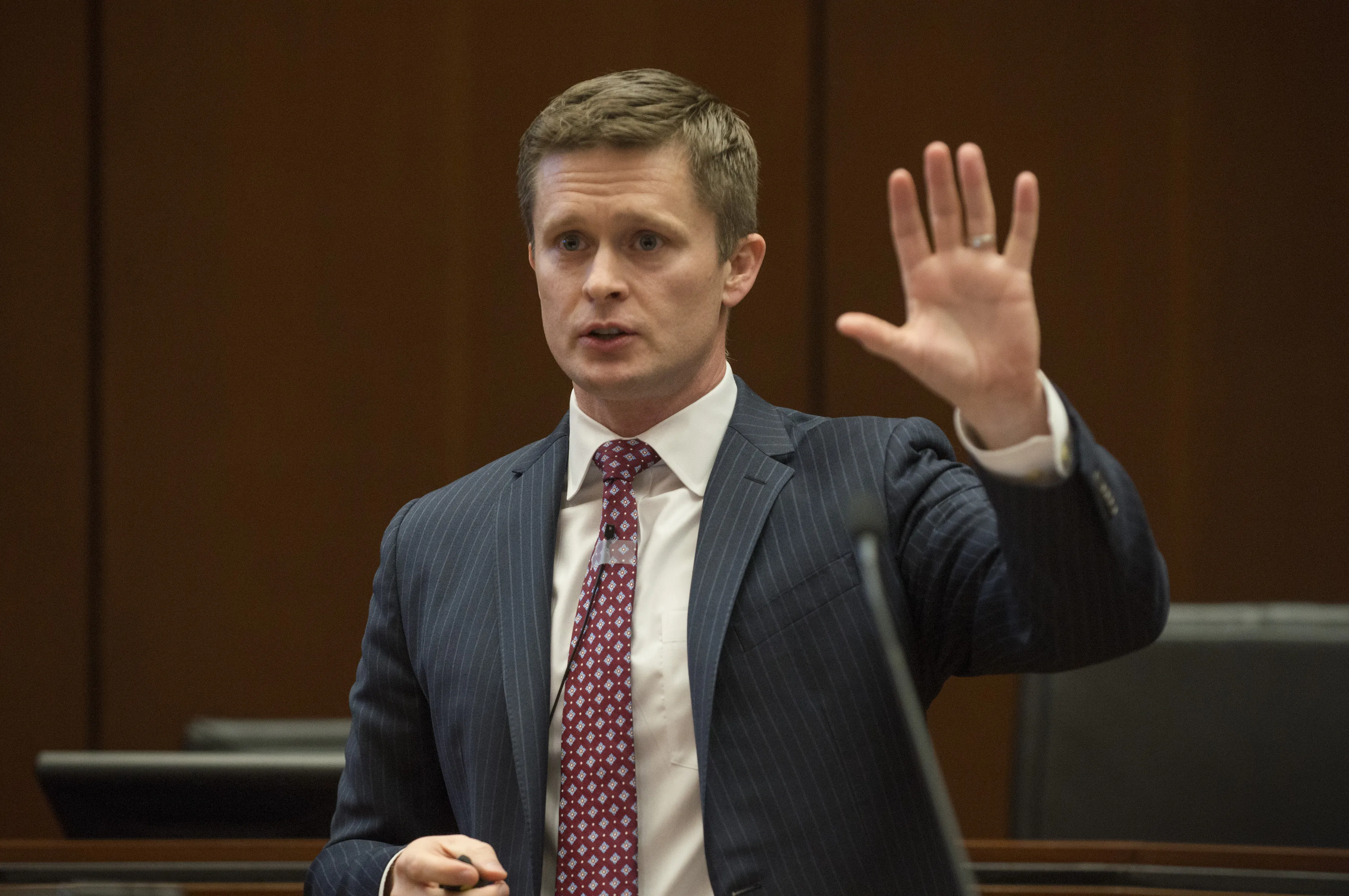Finding Meaning in Rules and Standards

Through the lens of law and economics, legal scholars have extracted useful meaning from the rules-and-standards debate—a discussion that has long divided those who practice and study law, Anthony J. Casey said when he delivered this year’s Ronald H. Coase Lecture in Law and Economics. This useful meaning gives us “The Short Happy Life of Rules and Standards”—a happy life, he argued, that may end with the emergence of big data and advanced technology.
During his talk, Casey, Professor of Law and Mark Claster Mamolen Teaching Scholar, explained that the words “rules” and “standards” are subjective and widely cited in legal scholarship—on HeinOnline, there are over 5,000 articles with both of these terms in their title. A rule, such as “drive 40 mph,” gives strict ex-ante instructions, while a standard that says “drive slowly in inclement weather” is more ambiguous and leaves interpretation to the courts after the fact.
“You can find articles on the rules and standards of antitrust law, of patent law, and of constitutional law,” he said. “It always fits, people always use it, and it applies everywhere. We should be skeptical of a concept that applies to everything under the sun.”
According to Casey, the “happy life” of rules and standards—in other words, when the debate informs rather than complicates—began when Richard Posner, judge on the US Court of Appeals for the Seventh Circuit and Senior Lecturer at the Law School, and economist Isaac Ehrlich analyzed the term in the context of law and economics in their 1974 article “An Economic Analysis of Legal Rulemaking.”
“While theirs is a preliminary inquiry, it contains at least a passing identification of every angle and every important aspect that law and economics scholars talk about when they talk about rules and standards,” Casey said.
In their article, Posner and Ehrlich discussed a number of key factors that inform the debate over rules and standards. The costs of promulgation (creating a law with a good fit), uncertainty (needing advice on the content of the law), and litigating (determining the outcome of each specific case) vary depending on whether the law behaves more like a rule or a standard—promulgation costs are higher with rules, while litigating costs are higher with standards.
“When we decide between a rule and a standard, we are deciding between whether or not we want to create content at the moment we create the rule, or punt on it later with a standard,” Casey said.
Two additional key factors are pre-commitment and evasion. When the government pre-commits to strict laws, it cannot be subject to ex post bias and twist them in its favor after events have unfolded. Rules have high pre-commitment, while standards’ pre-commitment is low. The flipside of pre-commitment is evasion, Casey added, because when people know the exact content of a law, they are better equipped to find loopholes and evade it for their own benefit.
“When the government gives you specific rules, you can figure out how to get around them,” Casey said, referring to a point that David Weisbach, Walter J. Blum Professor of Law, made in his 1999 essay, “Formalism in the Tax Law.” “We have the risk of evasion, and the risk of government abuse—decide between the two, and you’re deciding between rules and standards,” Casey said. “If rules and standards can help us see the question of tax that way, they really are useful, and they really can advance both the academy and the practice.”
This development was the height of the happy life of rules and standards. But, he added, Saul Levmore, William B. Graham Distinguished Service Professor of Law, challenged this happy life in an essay responding to Weisbach titled “Double Blind Law Making and Other Comments on Formalism in the Tax Law.”
“[Levmore] writes, ‘Imagine now a scheme in which the government wrote the rules, but withheld complete information about their content,’” Casey said. “If the government writes a rule, but doesn’t reveal the details until after the fact, we’re solving the pre-commitment problem, and we’re solving the evasion problem.”
Casey refers to this as the ‘Levmore Law’, and while it corrects evasion without sacrificing pre-commitment, it decreases fit relative to a standard. When people are bound to a law whose content was set ex ante, they forgo the ex-post fit of a standard, even if that content is not revealed until later.
A recent paper that Casey wrote with University of Toronto Professor Anthony Niblett titled “The Death of Rules and Standards” imagined a future in which big data and technology create laws for individuals and reveal them in real time. For example, instead of saying, “drive 40 mph” or “drive slowly in inclement weather,” there would be a high-fit “micro-directive” that says, “due to weather and traffic conditions, drive exactly 37 mph.”
Applying the Levmore Law to the micro-directive gives us an additional option: the “delayed micro-directive,” where a computer program still determines a personalized law, but it doesn’t reveal the content of the individual’s law until after the action.
“When I wrote ‘The Death of Rules and Standards’ I didn’t think about this [delayed micro-directive],” Casey said. “I thought, ‘We don’t have a choice anymore, we just use the program to get the micro-directive.’ The Levmore Law tells me we do have a choice—we can add a slight delay, and have a better outcome when we’re really worried about evasion.”
A choice between the micro-directive and the delayed micro-directive weighs the cost of evasion against the value of certainty (but not pre-commitment), and maybe being able to make this choice is the death of rules and standards, Casey said. Maybe in the future, with advanced technology, the rules and standards debate will finally be irrelevant.
“But looking at it, I’m now starting to think I’ve been wrong this entire time, because maybe [the delayed micro-directive] is a standard, and [the micro-directive] is a rule,” Casey said. “Do we want the Levmore delay, or not? And maybe that’s the question that we really face when we’re looking at the form of law in the future when we get the technology we need.”

